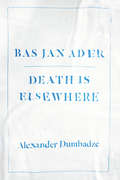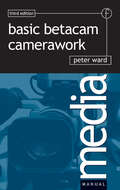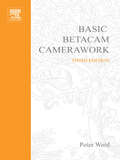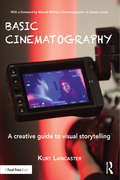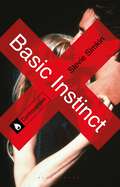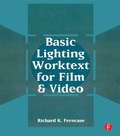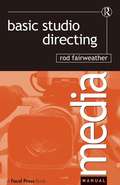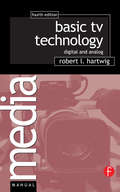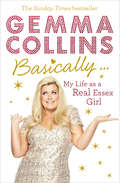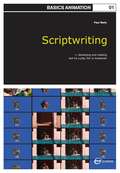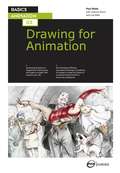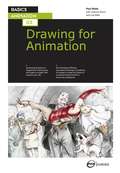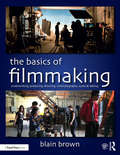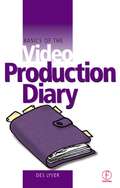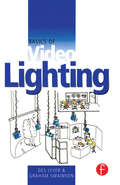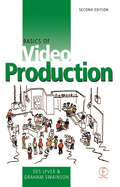- Table View
- List View
Bas Jan Ader: Death Is Elsewhere
by Alexander DumbadzeOn July 9, 1975, Dutch-born artist Bas Jan Ader set sail from Chatham, Massachusetts, on a thirteen-foot sailboat. He was bound for Falmouth, England, on the second leg of a three-part piece titled In Search of the Miraculous. The damaged boat was found south of the western tip of Ireland nearly a year later. Ader was never seen again. Since his untimely death, Ader has achieved mythic status in the art world as a figure literally willing to die for his art. Considering the artist’s legacy and concise oeuvre beyond the romantic and tragic associations that accompany his peculiar end, Alexander Dumbadze resituates Ader’s art and life within the conceptual art world of Los Angeles in the early 1970s and offers a nuanced argument about artistic subjectivity that explains Ader’s tremendous relevance to contemporary art. Bas Jan Ader blends biography, theoretical reflection, and archival research to draw a detailed picture of the world in which Ader’s work was rooted: a vibrant international art scene populated with peers such as Ger van Elk, William Leavitt, and Allen Ruppersberg. Dumbadze looks closely at Ader’s engagement with questions of free will and his ultimate success in creating art untainted by mediation. The first in-depth study of this enigmatic conceptual artist, Bas Jan Ader is a thoughtful reflection on the necessity of the creative act and its inescapable relation to death.
Bas Jan Ader: Death Is Elsewhere
by Alexander DumbadzeOn July 9, 1975, Dutch-born artist Bas Jan Ader set sail from Chatham, Massachusetts, on a thirteen-foot sailboat. He was bound for Falmouth, England, on the second leg of a three-part piece titled In Search of the Miraculous. The damaged boat was found south of the western tip of Ireland nearly a year later. Ader was never seen again. Since his untimely death, Ader has achieved mythic status in the art world as a figure literally willing to die for his art. Considering the artist’s legacy and concise oeuvre beyond the romantic and tragic associations that accompany his peculiar end, Alexander Dumbadze resituates Ader’s art and life within the conceptual art world of Los Angeles in the early 1970s and offers a nuanced argument about artistic subjectivity that explains Ader’s tremendous relevance to contemporary art. Bas Jan Ader blends biography, theoretical reflection, and archival research to draw a detailed picture of the world in which Ader’s work was rooted: a vibrant international art scene populated with peers such as Ger van Elk, William Leavitt, and Allen Ruppersberg. Dumbadze looks closely at Ader’s engagement with questions of free will and his ultimate success in creating art untainted by mediation. The first in-depth study of this enigmatic conceptual artist, Bas Jan Ader is a thoughtful reflection on the necessity of the creative act and its inescapable relation to death.
Basic Betacam Camerawork (Media Manuals Ser.)
by Peter WardBasic Betacam Camerawork offers a complete introduction to both the analogue and digital beta camera formats: Betacam, Digital Beta, Betacam SX and DV & DVCAM. Step-by-step instructions are given covering everything from pre-recording checklists, to technical camera specifications, instruction on exposure and lighting, composition, editing and sound and techniques for different programme styles. Aimed at TV camera operators just starting out and film cameramen and women converting to video this book will also appeal to students on film and television production courses.Peter Ward is a freelance cameraman and trainer working with the International Television Training Consultancy and ex-Chairman of the Guild of Television Cameramen. He spent many years working on a variety of programmes at the BBC before becoming Head of Cameras at Television South West. Peter is author of the following books for Focal Press: Digital Video Camerawork, Picture Composition for Film and Video , Studio & Outside Broadcast Camerawork, TV Technical Operations and co-author of Multiskilling for TV Production.Basic Betacam Camerawork offers a complete introduction to both the analogue and digital beta camera formats.
Basic Betacam Camerawork
by Peter WardBasic Betacam Camerawork offers a complete introduction to both the analogue and digital beta camera formats: Betacam, Digital Beta, Betacam SX and DV & DVCAM. Step-by-step instructions are given covering everything from pre-recording checklists, to technical camera specifications, instruction on exposure and lighting, composition, editing and sound and techniques for different programme styles. Aimed at TV camera operators just starting out and film cameramen and women converting to video this book will also appeal to students on film and television production courses.Peter Ward is a freelance cameraman and trainer working with the International Television Training Consultancy and ex-Chairman of the Guild of Television Cameramen. He spent many years working on a variety of programmes at the BBC before becoming Head of Cameras at Television South West. Peter is author of the following books for Focal Press: Digital Video Camerawork, Picture Composition for Film and Video , Studio & Outside Broadcast Camerawork, TV Technical Operations and co-author of Multiskilling for TV Production.Basic Betacam Camerawork offers a complete introduction to both the analogue and digital beta camera formats.
Basic Cinematography: A Creative Guide to Visual Storytelling
by Kurt LancasterThe cinematographer must translate the ideas and emotions contained in a script into something that can be physically seen and felt onscreen, helping the director to fulfil the vision of the film. The shots may look good, but they will not serve the story until the composition, lenses, and lighting express, enhance, and reveal the underlying emotions and subtext of the story. By making physical the ideas and emotions of the story, the cinematographer supports blocking as a visual form of the story through these tools. Rather than delve into technical training, Basic Cinematography helps to train the eye and heart of cinematographers as visual storytellers, providing them with a strong foundation for their work, so that they’re ready with creative ideas and choices on set in order to make compelling images that support the story. The book includes tools, tables, and worksheets on how to enhance students and experienced filmmakers with strong visual storytelling possibilities, including such features as: Dramatic script analysis that will help unlock blocking, composition, and lighting ideas that reveal the visual story Ten tools of composition Psychological impact of lenses, shot sizes, and camera movement Six elements of lighting for visual storytelling What to look for beneath the "hood" of cameras, including using camera log, RAW, and LUTs Dramatic analysis chart and scene composition chart to help plan your shoots Case studies from such visually cinematic shows and documentaries as Netflix’s Godless, Jessica Jones, The Crown, and Chef’s Table, as well as examples from classroom exercises Features insights from the DP of Jessica Jones, Manuel Billeter, and the DP of Chef’s Table, Adam Bricker.
Basic Instinct (Controversies)
by Stevie SimkinPaul Verhoeven's 1992 thriller Basic Instinct - starring Michael Douglas as a police detective and Sharon Stone as the femme fatale Catherine Tramell - was one of the first mainstream 'erotic thrillers', a film which shifted the boundaries for graphic representations of sex in Hollywood cinema. It remains a significant milestone in film censorship and controversy. In his fascinating study, the first in-depth account of the film, Stevie Simkin explores the unrest and protest that Basic Instinct sparked in the gay, lesbian and feminist communities in the US, incensed by what they saw as the script's homophobia and misogyny.Simkin considers the social and cultural context in which Basic Instinct was made, examining the film's troubled production history, the battles with censors, and its reception. He offers a number of readings of the movie, looking at its representation of bisexuality and the depiction of a 'transgressive' female protagonist. He also focuses on key sequences, including the infamous interrogation scene, and details the cuts demanded by the censors, resulting in different UK and US versions. In conclusion, Simkin considers the legacy of Basic Instinct, and its enduring effect on media representations of the violent woman.STEVIE SIMKIN is Reader in Drama and Film at the University of Winchester, UK. His publications include work on cult television, popular music, and Renaissance drama. He is the author of, amongst other works, A Preface to Marlowe (1999), Revenge Tragedy: A New Casebook (2001), Early Modern Tragedy and the Cinema of Violence (2005), and, also in the Controversies series, a book on the Peckinpah film, Straw Dogs.
Basic Lighting Worktext for Film and Video
by Richard FerncaseBasic Lighting Worktext for Film and Video guides the film and video student through a series of readings, exercises and projects designed to provide the fundamentals of light science. In addition to up-to-date descriptions of equipment and tips on how to use it properly, the book provides numerous set-ups that illustrate the techniques and thoughts behind proper studio and location lighting. From this book, you will learn:* The fundamentals of light and electricity in film* The fine distinction of lighting for video versus lighting for film* How to identify and filter sources such as daylight, tungsten, fluorescent, arc, HNI and industrial discharge lamps* The use of lensed and open-faced lighting fixtures* How to modify with barndoors, scrims, snoots, nets, cookies, and other accessories* Variations on the basic three-point lighting setup* The duties of each member of a lighting unit* How to light night exteriors, day interiors, and campfires* High-key, low-key, and modulated value lighting* How to scout locations, plan lighting, plots, and pre-rig sets
Basic Lighting Worktext for Film and Video
by Richard FerncaseBasic Lighting Worktext for Film and Video guides the film and video student through a series of readings, exercises and projects designed to provide the fundamentals of light science. In addition to up-to-date descriptions of equipment and tips on how to use it properly, the book provides numerous set-ups that illustrate the techniques and thoughts behind proper studio and location lighting. From this book, you will learn:* The fundamentals of light and electricity in film* The fine distinction of lighting for video versus lighting for film* How to identify and filter sources such as daylight, tungsten, fluorescent, arc, HNI and industrial discharge lamps* The use of lensed and open-faced lighting fixtures* How to modify with barndoors, scrims, snoots, nets, cookies, and other accessories* Variations on the basic three-point lighting setup* The duties of each member of a lighting unit* How to light night exteriors, day interiors, and campfires* High-key, low-key, and modulated value lighting* How to scout locations, plan lighting, plots, and pre-rig sets
Basic Studio Directing
by Rod FairweatherAll studio directors need to know the basics of studio directing, whether they go on to direct news, drama, children's programmes or light entertainment. Learning the ropes on air can be costly: this book gives you all the practical and technical guidance you need to deliver a trouble free programme. All studio directors need to know the basics of studio directing, whether they go on to direct news, drama, children's programmes or light entertainment. Learning the ropes on air can be costly: this book gives you all the practical and technical guidance you need to deliver a trouble free programme.Starting with an emphasis on the skills that make a good director, the essential day to day know-how is outlined - from different presentation formats to the roles of the production team, camera technology, composition, lighting, digital video, chroma key, make-up and wardrobe. Whether you are a student or practitioner wishing to sharpen up your technique, this manual is an excellent guide to the technology and skills required.This book:· Provides essential day to day information in one handy source · Offers a combination of theory and practice, technical data and intuitive skill· Is an excellent introductory text for anyone embarking on a career in directingContents:Networks * Cameras and Pictures * Pre-Production * Cutting and Combining Pictures * The Studio Team * Interviews * Magazines * Script Layouts * Electronic Newsrooms * Practical Directing * Communications * Directors Technology * Dealing with Problems.Rod Fairweather is a freelance director and has worked for companies such as SKY TV, GMTV, ITN and MTV Europe. He conducts training courses on directing all over the world including Singapore, India and Australia.
Basic Studio Directing
by Rod FairweatherAll studio directors need to know the basics of studio directing, whether they go on to direct news, drama, children's programmes or light entertainment. Learning the ropes on air can be costly: this book gives you all the practical and technical guidance you need to deliver a trouble free programme. All studio directors need to know the basics of studio directing, whether they go on to direct news, drama, children's programmes or light entertainment. Learning the ropes on air can be costly: this book gives you all the practical and technical guidance you need to deliver a trouble free programme.Starting with an emphasis on the skills that make a good director, the essential day to day know-how is outlined - from different presentation formats to the roles of the production team, camera technology, composition, lighting, digital video, chroma key, make-up and wardrobe. Whether you are a student or practitioner wishing to sharpen up your technique, this manual is an excellent guide to the technology and skills required.This book:· Provides essential day to day information in one handy source · Offers a combination of theory and practice, technical data and intuitive skill· Is an excellent introductory text for anyone embarking on a career in directingContents:Networks * Cameras and Pictures * Pre-Production * Cutting and Combining Pictures * The Studio Team * Interviews * Magazines * Script Layouts * Electronic Newsrooms * Practical Directing * Communications * Directors Technology * Dealing with Problems.Rod Fairweather is a freelance director and has worked for companies such as SKY TV, GMTV, ITN and MTV Europe. He conducts training courses on directing all over the world including Singapore, India and Australia.
Basic TV Technology: Digital and Analog (Media Manual Ser.)
by Robert L HartwigBasic TV Technology is the essential basic guide to the fundamentals underlying all television and video systems, written for students and nontechnical professionals. You don't need to have a math or science background in order to understand this explanation of how the principal pieces of equipment work, what their functions are, and how they are integrated to form a complex video system. An understanding of this material will be necessary for you to succeed in the real world, where one person often has to perform many different roles and functions within a production. Armed with some basic technical background information, you'll be more effective at figuring out new applications and at problem-solving. The fourth edition of Basic TV Technology has been updated to reflect the industry shift to digital video and includes new information on compression, television standards, LCD displays, HD, and equipment. This book features the accessible Media Manual format, in which every topic is covered in two pages: one of explanatory text and one of figures. Need more information on TV technologies, go to: http://www.insightmedia.info/newsletters.php
Basic TV Technology: Digital and Analog
by Robert L HartwigBasic TV Technology is the essential basic guide to the fundamentals underlying all television and video systems, written for students and nontechnical professionals. You don't need to have a math or science background in order to understand this explanation of how the principal pieces of equipment work, what their functions are, and how they are integrated to form a complex video system. An understanding of this material will be necessary for you to succeed in the real world, where one person often has to perform many different roles and functions within a production. Armed with some basic technical background information, you'll be more effective at figuring out new applications and at problem-solving. The fourth edition of Basic TV Technology has been updated to reflect the industry shift to digital video and includes new information on compression, television standards, LCD displays, HD, and equipment. This book features the accessible Media Manual format, in which every topic is covered in two pages: one of explanatory text and one of figures. Need more information on TV technologies, go to: http://www.insightmedia.info/newsletters.php
Basically...: My Life as a Real Essex Girl
by Gemma Collins LimitedBlonde, bubbly and ballsy, Gemma Collins has had fans of The Only Way Is Essex glued to their TVs since her arrival in series two. Her larger-than-life personality makes people cry with laughter as she haphazardly navigates through one romantic crisis after another. Gemma tries hard when it comes to finding 'Mr Right' – baking love pies and sexy texting – yet it never seems to work out. But does she care? Of course she doesn't. She always has the upper hand, leaving men quaking in their boots and women looking on in admiration. But finding her confidence has been a long and heartbreaking journey for Gemma.Inside, she opens up about the life events she endured before finding fame and feeling comfortable in her own skin. From breaking up with the love of her life and miscarrying a baby, to a drastic weight gain and depression; life for a real Essex girl is far from just an endless cycle of spray tans and vajazzles.Basically... is the touching yet riotously funny story of how a young girl with a big heart finally found what she’d been looking for. Herself.
Basics Animation 01: Scriptwriting (Basics Animation)
by Paul WellsBasics Animation: Scriptwriting addresses the full range of approaches to scripting and developing for animated films.It details the issues faced by the animation scriptwriter, and the techniques to overcome them. It also seeks to promote the unique qualities of animation as a form of expression, using many images to illustrate and emphasise points made in the text.This book looks at genres in animation as a starting point for scripting, employing a range of case studies from feature films to public relations work to independent productions, in order to reveal a range of approaches to writing.
Basics Animation 03: Drawing for Animation (Basics Animation #3)
by Paul WellsBasics Animation 03: Drawing for Animation introduces readers to the practice of drawing images for use in animation. It examines the thinking process and techniques involved with drawing characters, composition and movement, narrative and adaptation.Drawing is a fundamental part of the preparatory stages of virtually all design-led projects. It is the core method by which ideas and concepts are envisaged and ultimately shared with collaborators, clients and audiences.Aimed at students and those interested in entering the animation business, this book explores the pre-production work essential for producing great animation. It gives readers a real insight into this work through its outstanding range of images.
Basics Animation 03: Drawing for Animation (Basics Animation)
by Paul WellsBasics Animation 03: Drawing for Animation introduces readers to the practice of drawing images for use in animation. It examines the thinking process and techniques involved with drawing characters, composition and movement, narrative and adaptation.Drawing is a fundamental part of the preparatory stages of virtually all design-led projects. It is the core method by which ideas and concepts are envisaged and ultimately shared with collaborators, clients and audiences.Aimed at students and those interested in entering the animation business, this book explores the pre-production work essential for producing great animation. It gives readers a real insight into this work through its outstanding range of images.
The Basics of Filmmaking: Screenwriting, Producing, Directing, Cinematography, Audio, & Editing
by Blain BrownThe Basics of Filmmaking is an introductory textbook tailored to the needs of beginning and intermediate film students and independent filmmakers that expertly guides you through the entirety of the craft, from screenwriting all the way through to editing, with detailed chapters covering each department involved in the filmmaking process. The book takes a behind-the-scenes look at every aspect of the filmmaking process: writing the screenplay (and getting it critiqued by a professional), pre-production, cinematography, lighting, the shooting process, getting good audio, editing, and even going to a pitch meeting to sell it. It addresses the real fundamentals, the mechanics and the basic concepts of how to write, produce, direct, shoot, record, and edit your movie.Written by Blain Brown, a seasoned expert who has worked professionally as a cinematographer, screenwriter, director, producer, line producer, assistant director, gaffer, grip, and editor; this is a must have resource for any filmmaking student. Featuring an accompanying companion website with video examples of scene directing methods, continuity and coverage, working with the camera, lighting, audio, and editing, and downloadable production forms you can fill out and use for your projects.
The Basics of Filmmaking: Screenwriting, Producing, Directing, Cinematography, Audio, & Editing
by Blain BrownThe Basics of Filmmaking is an introductory textbook tailored to the needs of beginning and intermediate film students and independent filmmakers that expertly guides you through the entirety of the craft, from screenwriting all the way through to editing, with detailed chapters covering each department involved in the filmmaking process. The book takes a behind-the-scenes look at every aspect of the filmmaking process: writing the screenplay (and getting it critiqued by a professional), pre-production, cinematography, lighting, the shooting process, getting good audio, editing, and even going to a pitch meeting to sell it. It addresses the real fundamentals, the mechanics and the basic concepts of how to write, produce, direct, shoot, record, and edit your movie.Written by Blain Brown, a seasoned expert who has worked professionally as a cinematographer, screenwriter, director, producer, line producer, assistant director, gaffer, grip, and editor; this is a must have resource for any filmmaking student. Featuring an accompanying companion website with video examples of scene directing methods, continuity and coverage, working with the camera, lighting, audio, and editing, and downloadable production forms you can fill out and use for your projects.
Basics of the Video Production Diary (Basics Of Video Ser.)
by Des LyverVideo production requires a high degree of organization to be a success. Good organization will require a proper diary to be kept of your production. It is the understanding of the paperwork and its organization that will make your production either a success or a failure.Explained in accessible terms and assuming little prior knowledge of the subject, this book will help you to: plan successful procedures for all stages of a video production; produce paperwork logically to get professional results; understand the basic principles of setting up and running your own business; avoid common (and costly) pitfalls. If you are a student who wishes to learn about all aspects of planning and documenting a video production, from conceptualization right through to final screening, this book is for you. It is particularly suitable for the City and Guilds Media Techniques Certificate: Television and Video Production Competences. This book complements the other three titles in the series, which allow you to understand the overall process of video production, and then look in more detail at sound and lighting.
Basics of the Video Production Diary
by Des LyverVideo production requires a high degree of organization to be a success. Good organization will require a proper diary to be kept of your production. It is the understanding of the paperwork and its organization that will make your production either a success or a failure.Explained in accessible terms and assuming little prior knowledge of the subject, this book will help you to: plan successful procedures for all stages of a video production; produce paperwork logically to get professional results; understand the basic principles of setting up and running your own business; avoid common (and costly) pitfalls. If you are a student who wishes to learn about all aspects of planning and documenting a video production, from conceptualization right through to final screening, this book is for you. It is particularly suitable for the City and Guilds Media Techniques Certificate: Television and Video Production Competences. This book complements the other three titles in the series, which allow you to understand the overall process of video production, and then look in more detail at sound and lighting.
Basics of Video Lighting
by Des Lyver Graham SwainsonNow fully updated by Des Lyver to reflect the latest advances, the second edition of Basics of Video Lighting is a primer for anyone wishing to learn about lighting a video production. It describes the principles and processes involved in obtaining professional results in educational, training and corporate environments. Assuming little prior knowledge, this book covers everything from the different types of lights and their control, to basic studio and location settings. It features:· the latest technology, including the use of location and grip gear and changes in lamp and reflector technology · coverage of studio and location work· descriptions of the role of each crew member · full explanations of technical terms· health and safety precautions· practical advice on the equipment available and how to use itBasics of Video Lighting aims to provide the reader with a rapid understanding of what is actually a complex process, without getting too bogged down in technical terms. It is equipment non-specific and references to technical matters are only included where necessary to understanding, for example a short explanation of the simple electricity that is needed to understand the relationship between the camera and the lights.
Basics of Video Lighting
by Des Lyver Graham SwainsonNow fully updated by Des Lyver to reflect the latest advances, the second edition of Basics of Video Lighting is a primer for anyone wishing to learn about lighting a video production. It describes the principles and processes involved in obtaining professional results in educational, training and corporate environments. Assuming little prior knowledge, this book covers everything from the different types of lights and their control, to basic studio and location settings. It features:· the latest technology, including the use of location and grip gear and changes in lamp and reflector technology · coverage of studio and location work· descriptions of the role of each crew member · full explanations of technical terms· health and safety precautions· practical advice on the equipment available and how to use itBasics of Video Lighting aims to provide the reader with a rapid understanding of what is actually a complex process, without getting too bogged down in technical terms. It is equipment non-specific and references to technical matters are only included where necessary to understanding, for example a short explanation of the simple electricity that is needed to understand the relationship between the camera and the lights.
Basics of Video Production
by Des Lyver Graham SwainsonNow fully updated by Des Lyver to reflect the latest advances, the second edition of Basics of Video Production is a primer for anyone wishing to learn about video production. It describes the principles and processes involved in obtaining professional results in educational, training and corporate environments. Assuming little prior knowledge, this book takes the reader on a guided tour around a studio or location production, examining the production process from conceptualisation to the final screening. It features:· the latest advances in low cost non-linear editing and digital video· coverage of studio and location work· descriptions of the role of each crew member · full explanations of technical terms· health and safety precautions· practical advice on the equipment available and how to use itBasics of Video Production aims to provide the reader with a rapid understanding of what is actually a complex process, without getting too bogged down in technical terms. It is equipment non-specific and references to technical matters are only included where necessary to understanding. Much of what is contained in this book will be directly transferable to film and sound courses as the basics and principles are the same.
Basics of Video Production (Basics Of Ser.)
by Des Lyver Graham SwainsonNow fully updated by Des Lyver to reflect the latest advances, the second edition of Basics of Video Production is a primer for anyone wishing to learn about video production. It describes the principles and processes involved in obtaining professional results in educational, training and corporate environments. Assuming little prior knowledge, this book takes the reader on a guided tour around a studio or location production, examining the production process from conceptualisation to the final screening. It features:· the latest advances in low cost non-linear editing and digital video· coverage of studio and location work· descriptions of the role of each crew member · full explanations of technical terms· health and safety precautions· practical advice on the equipment available and how to use itBasics of Video Production aims to provide the reader with a rapid understanding of what is actually a complex process, without getting too bogged down in technical terms. It is equipment non-specific and references to technical matters are only included where necessary to understanding. Much of what is contained in this book will be directly transferable to film and sound courses as the basics and principles are the same.
Basilicata and Southern Italy Between Film and Ecology
by Alberto Baracco Manuela GieriThis volume offers an open, transdisciplinary living space (also green) through which to explore the different connections between Basilicata and Southern Italy, cinema, and ecology, and thus to reflect on the different forms through which the historical, cultural, and social contexts of Southern Italian regions have been variously identified and represented. In order to explore these connections, the volume embraces a wide range of perspectives that may all be grouped under the key term film ecocriticism, offering the reader a thorough analysis not only of the different ways of representing reality but also of the processes of signification through which reality itself can be understood, rethought, and transformed. This is the general framework within which the authors consider film as a proper, effective medium for ecocritical and ecophilosophical reflections concerning not only Basilicata (to which the greater part of the volume is dedicated) but also Southern Italy and, therefore, its history and its territories, communities, and identities. Furthermore, in an even more general sense, Basilicata and Southern Italy reconnects with the very idea of the South, and of all Souths, to which this volume is dedicated.
